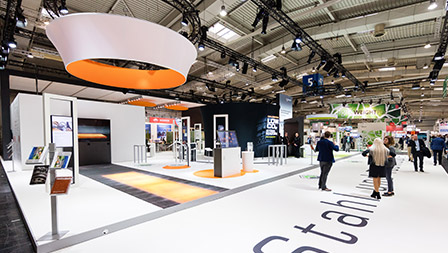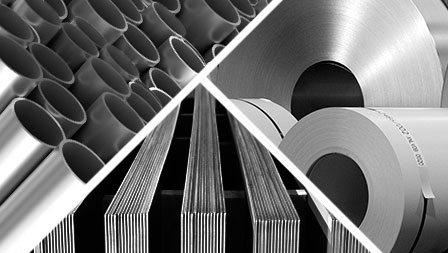Salzgitter Group with outstanding third quarter result
12.11.2004 | Salzgitter AG
Salzgitter Group with outstanding third quarter result
Thanks to the persistent buoyant demand for rolled steel products and tubes, the positive trend in the Salzgitter Group’s business operations continued in the third quarter of 2004. The Group’s pre-tax earnings of € 75.6 million constituted a new record, even by long-term comparison.
In the first nine months of 2004 the Group generated consolidated external sales of € 4.30 billion, an increase of 16% over the comparable period in the previous year (€ 3.70 billion). The boom on the international steel markets brought about perceptible sales increases in the Trading and Steel Divisions. In line with this, the Group’s pre-tax profits increased strongly to € 157.2 million (9 months 2003: € 32.9 million), with contributions being made not only by the Divisions referred to above but also by the Tubes Division, which in the previous year had suffered from particularly unfavorable general conditions. The implementation of the Group-wide profit improvement program resulted in further positive effects.
After-tax profits increased to € 110.4 million (9 months 2003: € 22.3 million) and the interest earned on invested capital (ROCE), at an annualized 15.7%, returned to a very satisfactory level after two difficult years (9 months 2003: 5.0%).
Having totaled € 1.07 billion in the previous year, external sales in the Steel Division increased to € 1.27 billion – a growth rate of 19%. Total sales even rose by 21% to € 1.81 billion (9 months 2003: € 1.50 billion) as a result of the Group making greater use of its own distribution channels. Compared with the first three quarters of the financial year 2003, when capacity utilization was lower as a result of market and investment factors, the flat rolled products and beams segments in particular enjoyed substantial growth in the volume and value of their sales. Having raised the selling prices for steel gradually in several stages, the Group has now largely compensated for the partially dramatic increases in the cost of raw materials and energy sources. Thanks to pleasing results, primarily for flat rolled products and plates, and the turnaround in the beams segment that was achieved in mid-year, the Steel Division posted pre-tax profits of € 73.9 million in the period under review (9 months 2003: € 19.3 million). The result includes profits of € 8.1 million from the sale of shares in the US-based steel company Steel Dynamics Inc. This positive effect was more than offset by a higher non-recurring expenses incurred in connection with the blast furnace relining during the second quarter of 2004.
The Trading Division, which was able to pass on the production plants’ price increases to its buyers without any time lags, benefited more than any other Division from the boom-like conditions on the steel markets. With volumes sold generally positive, external sales increased by 21% to € 1.92 billion (9 months 2003: € 1.59 billion). The extraordinary scale of the leap in earnings, which reached € 72.6 million (9 months 2003: € 10.3 million), can be attributed largely to the fact that the selling of inventories that had been procured under the favorable conditions of the previous quarters resulted in substantial gains in margins.
The markets for tubes picked up increasingly during the first nine months of 2004. Sales prices rises that were urgently required to offset the prices of input stock, which moved up sharply in this segment too, were achieved. Against this background, the Tubes Division increased its external sales to € 720 million (9 months 2003: € 681 million), despite negative exchange rate effects. By contrast to the crisis-ridden first nine months of 2003 (€ 1.6 million), pre-tax earnings returned to a highly gratifying level at € 53.8 million. The main contributors to this trend were discernible earnings improvements in the large-diameter pipes and stainless products segments and the more positive development of business in the seamless tubes segment.
At € 228 million, the external sales posted by the Services Division expanded by 24% compared with the previous year’s level (€ 184 million). The main reason for this development was the expansion in the sales of the trading company DEUMU in its operations with non-Group entities as a result of high scrap and alloying additions prices. Pre-tax profits amounted to € 16.2 million (9 months 2003: € 10.1 million).
The persistently weak state of the construction industry in most of the Western European countries and cost-cutting measures enacted by auto manufacturers burdened business activity in the Processing Division and ensured a high degree of competitive pressure. In contrast to the Group’s other divisions, the sharply increased prices of input stock could be passed on to customers only to a limited extent and with time lags. The Division’s external sales of € 161 million remained below their level in the first nine months of 2003 (€ 173 million). Following an unsatisfactory first six months, the earnings position stabilized in the third quarter. The result was a pre-tax loss of € 22.6 million in the period under review (9 months 2003: € -12.4 million). In addition, extraordinary write-downs amounting to € 37 million were carried out in the Processing Division; these were balanced by waivers of claims in almost the same amount by the Holding. As a result of these extraordinary factors, earnings from ‘Consolidation and others’ were negative (9 months 2004: € -36.7 million; 9 months 2003: € 4.1 million).
Even though rising interest rates in the USA and more restrictive economic policies in China should lead to a deceleration of worldwide economic growth, the general conditions in this regard can still be described as positive. For the most significant European economies, on the other hand, there are no expectations of sustained growth momentum. The extremely steep increases in raw materials and energy prices, the renewed weakness of the dollar and the crisis in the Near and Middle East remain latent risk factors.
Although the global market for rolled steel, which had been overheated by speculation, presently appears to be normalizing again, the use of steel should continue to rise in 2005. Scrap prices and sea freight rates are still on an upward trend and further price increases for coking coal and iron ore can be assumed for the coming year. While a good overall capacity utilization at an adequate level of sales prices has been secured into the new year for the Steel Division, the medium-term trend in profitability will depend on the extent to which future cost increases can be offset.
The growth in worldwide demand for oil, gas and energy is currently bringing about a sharp rise in the number of exploration, pipeline and power station projects – which proved especially profitable for the seamless tube and pipeline manufacturers in the Tubes Division. The current orders position gives reason to expect that capacity utilization will remain highly satisfactory over the coming months.
Against a background of firm steel prices, the additive inventory effect at the Trading Division will diminish further over the next few months. The satisfactory overall level of demand should keep margins at a comfortable level.
The favorable situation at the Services Division is likely to persist. Despite the difficult situation being endured by the Processing Division’s buyer industries, the measures implemented have now brought about an improvement in the business situation in the affected companies. This promising trend should continue.
The rigorous implementation of the profit improvement program, with currently 289 individual measures, will continue to give lasting support to the development of earnings in all of the Group’s Divisions.
Based on current information and expectations concerning the short term developments on the procurement and sales markets, as well as the general fundamentals, and including the effects of the profit improvement program, the Salzgitter Group expects to post pre-tax profits, before additional special items, of at least € 200 million for the financial year 2004. In evaluating the developments in the first months of 2005 it must be noted, apart from the generally gratifying situation on the rolled steel and tubes markets, that the bandwidth of opportunities and risks remains considerably wider than in previous years.














